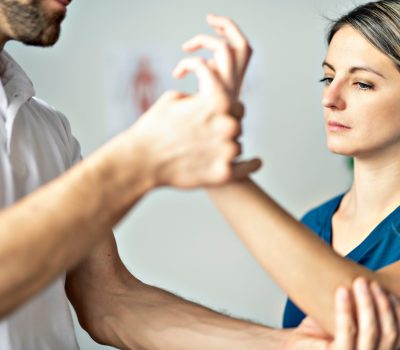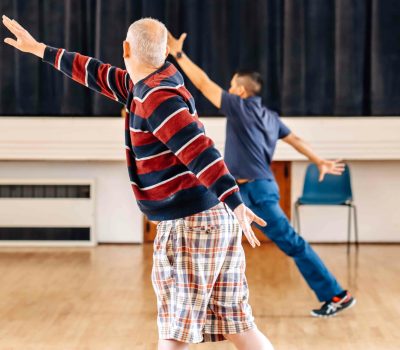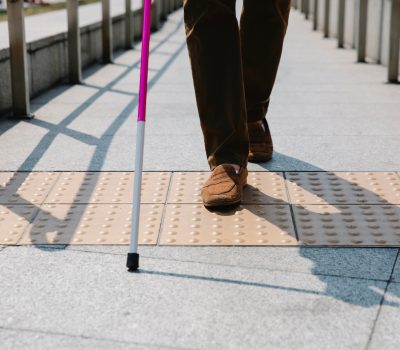There are a broad range of Neurological conditions that can affect how your legs work, here we will aim to try and break these down into the most common conditions, although the principles can be applied across many of the same conditions, for example MS and Guillain-Barre Syndrome may affect people in similar ways and follow similar exercise concepts.
Stroke & Brain Injury:
Having a stroke or a brain injury can affect your legs in lots of different ways, for example you may just be affected down one side of your body, or you may be affected in both your legs if your injury is greater. It may be that you find co-ordinating your limbs challenging, this is something we can touch on in another article, here we are focussing on strength.
Whilst your leg may be affected by the injury to your brain, there is often also associated de-conditioning of your legs due to a lack of use and your body prioritising your stronger side. Your aim with all of these exercises is to prioritise using your affected side and use your unaffected side to “pick up the slack”.
You may also find you have sensory disturbances and you can’t feel what your leg is doing, or may be unaware of it at times. This is quite common, but it can make it challenging to prioritise it and indeed trust it if you are unable to feel it. Often you may experience pain or strong pins and needles, which can be distracting and lead to a lack of confidence in your leg. The important thing to remember with this is that pain does not always mean there is a problem. Sometimes after an injury to your brain the messages going up and coming down can become a bit confused, consulting a specialist physiotherapist will help you navigate your pain and support you with managing it.
Parkinson’s Disease (PD):
There are many symptoms under the Parkinson’s Disease umbrella and it’s important to remember that no two people with Parkinson’s are the same. The main symptoms that may affect the use of your legs will be things such as rigidity, difficulty dual tasking (moving arms and legs at the same time), slowness of movement and freezing of gait (walking). All of these things can make it a real challenge to move around and as a result can cause weakness in your legs.
Guillain-Barre Syndrome (GBS):
This is a little different to the other conditions listed above in that the syndrome affects your nerves as opposed to your brain. Think of it like pressing a rest button, often characterised by progressive weakness, starting from your hands and feet and moving upwards in most cases. Once you have been treated however, your nerves begin to heal and lots of people go on to make a full recovery, although this can be slow and take time.
You may find your legs feel weak and you have sensory changes such as increased sensitivity/pain/pins and needles, again this should improve over time with the right input. Strengthening exercises will aim to harness the healing process your nerves are undergoing and improve on the strength returning in your legs.
Multiple Sclerosis (MS):
Most people with MS will be affected differently, this is partly due to the random way in which your nervous system can be affected. MS is characterised as the formation of plaques along your nerves and sometimes in your brain. These plaques slow down the messages moving through them and can lead to difficulties with co-ordination, sensory changes and weakness in your limbs (amongst other symptoms). You may also find your muscles and body fatigue quicker, and this can have quite an impact on how easily you are able to strengthen your muscles. However, with the right exercises (and dedication to them) you can strengthen your legs, in order to strengthen your legs it is best to focus on low repetitions (5-8) and high effort or weight with plenty of time to recover.
Cerebral Palsy (CP):
Living with CP you will have doubtless already encountered lots of physiotherapy, advice and education around exercise. People living with CP differ greatly, with some people affected in one arm, to others that are affected across all four limbs. Many people have difficulty co-ordinating their movements and may find it challenging to keep their muscles strong. Your exercise program should focus on a combination of specific muscle exercises and more whole body strengthening exercises, depending on your ability.
Spinal Cord Injury (SCI):
Spinal cord injury will affect people differently, depending on the level of injury. As a general rule, the muscles around and below the level of the spine you have injured will be affected. The severity is often determined by whether the injury is classified as complete or incomplete – this refers to the amount of the spinal cord that has been affected. Symptoms can vary widely based on this, from patchy weakness and sensation to complete paralysis. How you exercise will of course depend on your level of ability, but regardless of this it is important to work on the strength and maintaining the movement in your legs.
What sort of exercises will help me?
Instead of breaking this next part down into conditions, we are going to talk about how to exercise effectively and give you some examples of different exercises for your legs, depending on your level of ability. These exercises are not for everyone and you should consult with a specialist physiotherapist if you need something bespoke to your needs and abilities.
Neuro Active Exercise & Neuroplasticity:
You may well have heard the term neuroplasticity. The principles of it apply not just to those with a neurological condition, but to the wider population, everyone can engage in a bit of “neuroactive exercise to promote neuroplasticity”.
Essentially we are talking about your body and its ability to adapt to the demands placed upon it. For example, Roger Federer wasn’t born as the best tennis player in the world, he learned it. There is of course an argument for natural ability and talent, however most of his skill will be down to hard work and practice.
Your nervous system is capable of change, growth and essentially rewiring itself in response to demand. You can harness this ability and drive change in your own body by exercising in certain ways to challenge your condition – this may differ between people and conditions but the principles will remain the same.
Power – a lot of us lose the ability to generate power as we age and with the addition of a neurological condition it can be more difficult. In order to stimulate our neurological system we need to generate power during our movements, often the best way to do this is through increasing the speed of movement (as long as it’s controlled). Having a definite start and end point – brakes are as important as the accelerator!
Frequency – Nothing gets better without repetition, of all the people we work with, those who dedicate time to exercise do the best. It’s a bit like the phrase “you are what you eat” but for muscles – they will respond to what you do. Generally we would recommend an hour 5x per week – this can be broken up however you like, it can also be things like gardening or brisk walking – anything that gets your heart rate up.
Intensity – Working with intensity is best, you should be getting your heart rate higher and getting out of breath in order to drive change. Depending on your goals, you may be better working for 15 minutes intensely, than an hour at a slower pace.
Challenging – Exercises should not only be challenging physically, but also mentally, this helps you to work on doing two things at once – for example walking and carrying something, or to cope with distractions such as crossing a busy road.
Specific – The exercises must be specific to your individual needs, although to be honest, joining in a class or something similar will give you a good overall work out (providing it follows the other principles). They should also be relevant to your goals and have meaning for you, otherwise you will lose interest if you don’t see the point.
Fun – Having a long term condition is exactly that, long term, and so you really need to find a form of exercise that both suits and interests you if you are to continue with it in the long term. Regular contact with a physiotherapist, personal trainer or class can help to keep your exercises varied and help point you in the right direction.
Squats:
A great exercise for strengthening your hips and thighs, if your goal is to get out of a chair better, these are the one. You can progress them by squatting lower, standing up more explosively, holding a weight or lifting your hands above your head.
Stairs:
A really versatile exercise to help strengthen your knees and hips. You can vary this exercise by holding on, or not, stepping sideways/forwards or backwards on the stairs.
Bridging:
A great one for your hips and hamstrings – hard to get right but you can really challenge yourself, moving to a single leg, adding in different movements with your arms or using a gym ball.
Hip abduction:
Often forgotten about but really important for stability in standing, lying on your side and lifting one leg up can be a challenge, be careful not to let it drift forwards, having your back against a wall can help.
Is there anything I shouldn’t be doing?
The short answer is yes, but this is likely to be specific to you. As a general rule the exercises you complete shouldn’t cause you pain (aside from a bit of muscle aching) and you should always check with your GP or therapist/trainer before engaging in exercise with a medical condition. Most conditions are safe to exercise with providing they are stable, but individual advice is needed to make sure.
Where else can I find support and information?
Charities such as Parkinson’s UK (https://www.parkinsons.org.uk/information-and-support/exercise), Stroke Association (https://www.stroke.org.uk/resources/exercise-and-stroke), MS Society (https://www.mssociety.org.uk/care-and-support/everyday-living/staying-active/ms-and-exercise), SIA (https://spinal.co.uk/wp-content/uploads/2015/08/Physical-Activity.pdf) all have guidance on exercise and movement. They also run local exercise classes, often run by a physiotherapist with special knowledge of your condition.
Seeing a local Neuro Physiotherapist can often help guide you as a starting point, you can access these through your GP with the NHS or privately as an outpatient or home visit.
Our service will also offer appointments and advice with no waiting list and have a YouTUbe channel with some 30 minute videos for you to follow. https://www.youtube.com/channel/UCP76LyaCbPfP30L27EcClAA






